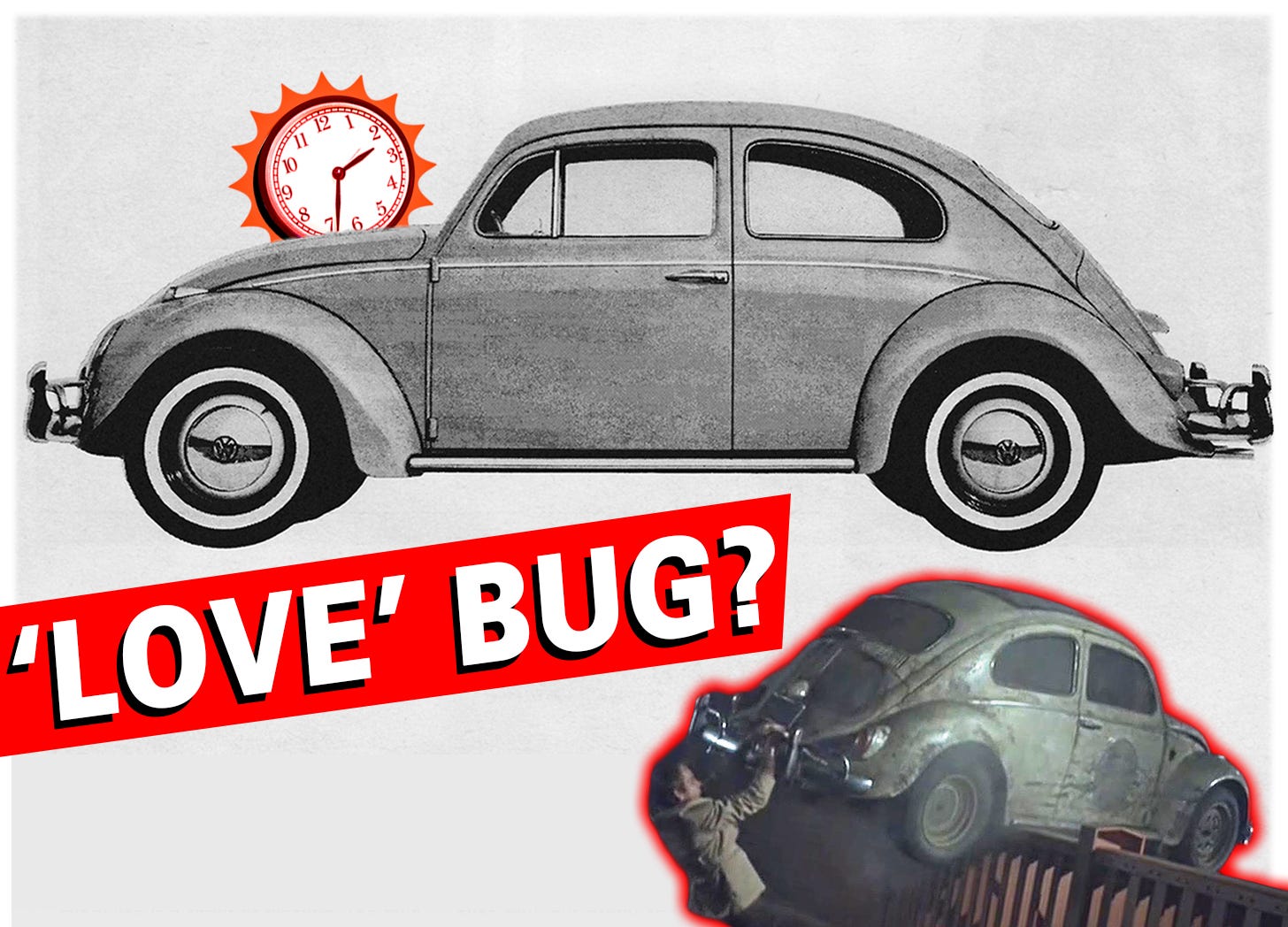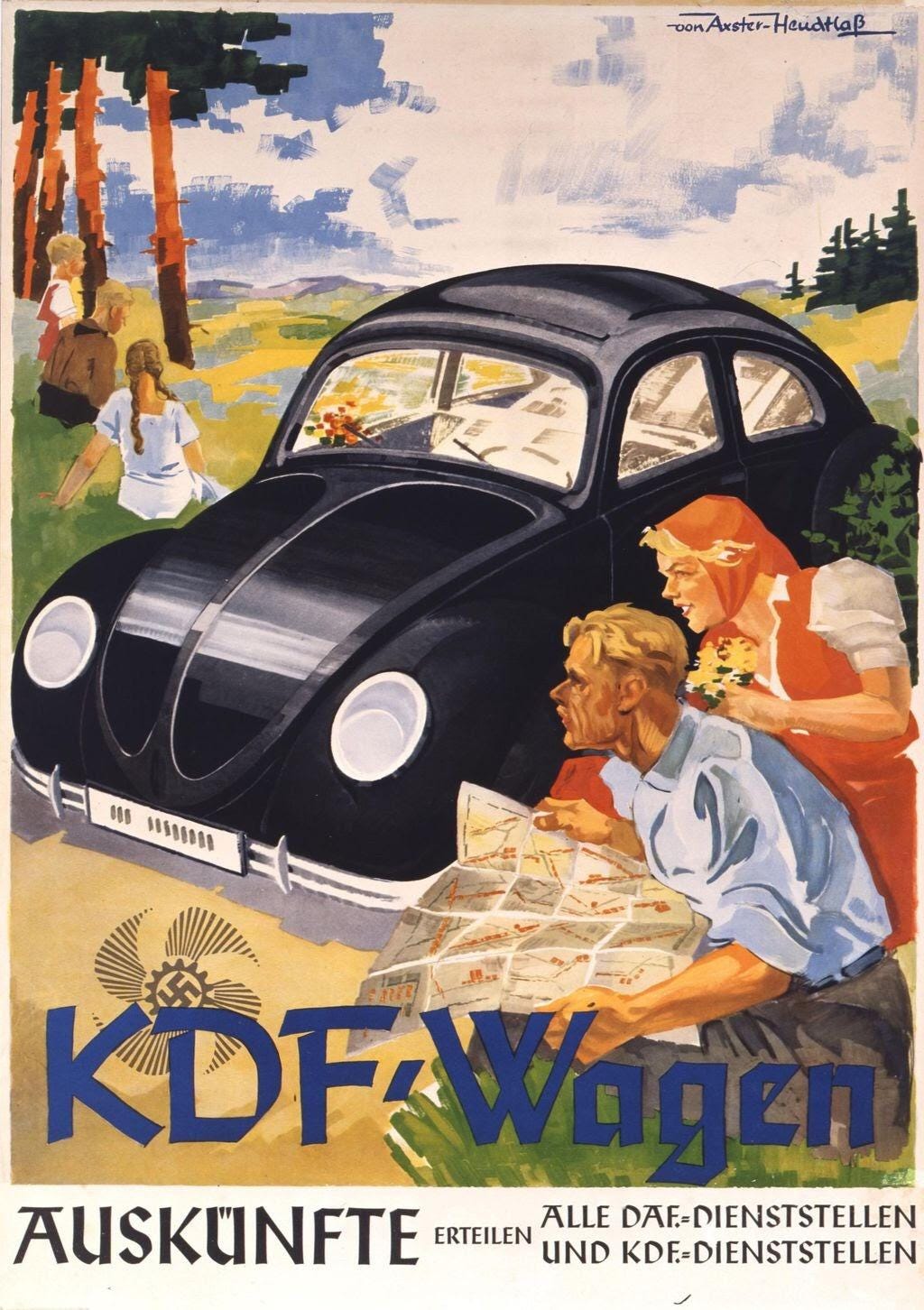When The Love Bug Had A Dark Side: Quick Jump
Mystery looms on how the Volkswagen Beetle was the most mass-produced car in the world—and remains so today. More than 21 million were built during the Beetle’s half-century factory run before it was retired in 2003, with the remaining units sold in Mexico. It has witnessed world events and evolving consumer tastes, which is partly why the humble little compact had endured so long.
But the beginnings were undoubtedly dark. Because its origins were conceived in 1930s Germany. Need I say more?
To give you a brief overview, Hitler commissioned the development of a family car in order to garner public appeal. That public appeal spurred a funding campaign which, in turn, raised enough money for Germany to kick off the early efforts of the second World War. And the soon-to-be-named Beetle was the product of the consequences that followed.
After the war, that appeal remained. A new company formed in West Germany, giving it something of a clean slate. Locals needed transportation and a functioning economy. As a result, Volkswagen licensed a total of 20 factories to carry out production.
With an unprecedentedly long-lasting lifespan, people all over the world were hooked on the notion of a streamlined design that could operate on cheap, accessible parts and the simplicity to fix it yourself—a necessity in third-world countries whom, between the 1950s and 1990s, saw cars on the road for the first time.
But the reason for this post is because of a silent connotation that came in the way of a self-apology. A motive that came in the way of self-harm.
It’s known as the Love Bug. It’s also the title of a 1968 film that catapulted a movie franchise and its main character to stardom. Herbie is beloved and Adult Me is determined to protect it.
I was about 5 years of age when I watched it for the time time. It wasn’t until my brain was fully formed when I realized just how dark one scene was. Particularly when it tries to jump the Golden Gate bridge. Yes, Herbie tried to commit suicide.
This came after a pivotal scene when Dean Jones, portraying a frankly horrible racing driver in the film, briefly rejected Herbie for a Lamborghini. The muppet didn’t realize that the car was helping him win races, not the other way around. When he realized that was the case, he chased him around San Francisco before trying to save the striped Bug from driving off the bridge. He succeeds and Herbie gets five more movies out of it.
The fact that these pictures were produced by Disney adds another layer of bewilderment. I can’t help but think that on a deeper level, that a Volkswagen Beetle portraying pity unto itself was a callback to the car’s birth. Because its popularity was already in full boom with America’s hippy culture, presumably with little acknowledgement of just how it came to exist in the first place.
With the Marshall Plan in effect, was exporting the Bug the world’s largest fiscal apology and we accepted it as an acceptable mode of transportation? Or was it the original notion of cost-effectiveness that kept buying and running costs low in the face of inflation the real motive?
Like I said in the beginning, the Beetle outlasted evolving consumer tastes for a remarkable 65 years until passenger safety regulations ultimately killed it. No question it would still be around today were that not the case. As a global cost-of-living crisis emerges, it could serve as a reference point as to how we as a society could rethink the use of materials, technology, and the engineering refinement that came with time.
And for once, it doesn’t have to be politically motivated. Just look at that Slate truck.
-TA



